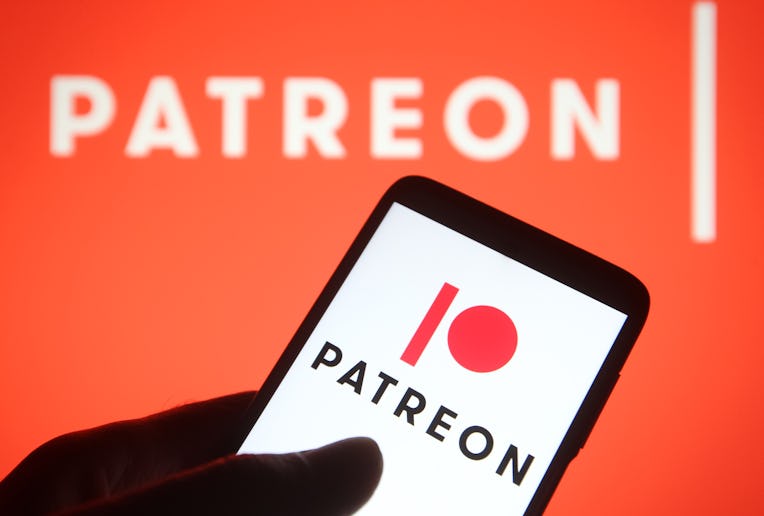Patreon Has a Really "Original" Idea: Original Content 😞
Please... we don't need any more

In the life cycle of every overvalued startup, there comes a point when seed capital must bust into some semblance of profitability, when the unicorn becomes a uniman. This rite of passage is often celebrated with the production of original content.
Netflix aged out of DVD delivery in 2013 with House of Cards. Hulu dabbled in ill-fated pop culture recaps, before pumping out shows like The Handmaid’s Tale. After Google acquired YouTube, they branched into originals starring the platform’s terrifying homegrown talent with YouTube Red. (The twist? The shows were bad.) These days, every company worth its Series-D financing has originals: Facebook and Snapchat got in the game; TikTok has been talking about it; Quibi existed briefly; gay dating app Grindr commissioned a series called “Bridesman” that screened at film festivals. Even Salesforce — the enterprise software company — just announced a “new streaming service for live experiences and original content.” They’re calling it “Salesforce+.”
And now Patreon is hitting puberty. Here’s Bloomberg:
Patreon is in the midst of a hiring spree, and in April it raised $155 million from investors who valued it at $4 billion, triple its valuation from an investment round in September 2020...The company is dedicating a significant portion of its most recent investment round to finance original programming for the first time.
You might remember Patreon. The platform, founded in 2013, allows mostly podcasters to put out material in exchange for recurring payments from their fans. It is the financial backbone behind a host of popular programs such as Chapo Trap House, as well as spinoffs of Chapo Trap House hosted by people who used to be roommates with the hosts of Chapo Trap House. In a sense, Patreon has been hurt by its own success. Their direct-to-creator payment model has been picked up by several, more specialized competitors: OnlyFans, for non-sexual nudes; Substack, for laid-off journalists; and Twitter Superfollows, also for laid-off journalists. At the same time, YouTube and Instagram have begun implementing similar payment features, and streaming companies have started shelling out for podcasts at a rapid clip.
In pivoting to production, Patreon hopes to transition into a full-service operation, like a New Jersey gas station. Creators, CEO Jack Conte told Bloomberg, can use the platform both for “back-end services,” like subscriptions or billing, and to release whatever they make. In an ideal world, this would result in a slate of revelatory semi-scripted series produced by gamers, grad students, and erotic fan fiction readers. But the site seems to be soliciting material from people outside their present roster:
Patreon’s plans, which haven’t been previously reported, include courting podcasters, video game livestreamers, YouTubers, and major celebrities such as Will Smith and Jennifer Lopez to make content that will appear live on Patreon before showing up elsewhere.
It’s unclear what exactly companies stand to gain from original productions, which take time, money, and at least minimal forethought. Even famous startup slobberer, ARK Invest, has raised reservations; a 2020 report notes: “Despite the significant investment and viewer numbers, little analysis exists on how original content translates into revenues on these streaming platforms.”
Perhaps Patreon will prove to be an exception. Gawker is not in the business of predicting profit outcomes for media startups looking to pump their valuation before an anticipated IPO. But consider that Patreon began as the side project of Pomplamoose — the “YouTube band,” comprising couple Jack Conte and Nataly Dawn, known for producing what they called “VideoSongs,” music videos that showcased their multi-instrumental process. As Conte told Bloomberg, neither these nor their solo projects made almost any money:
He maxed out two credit cards and spent more than $10,000 to make a music video featuring a replica Millennium Falcon cockpit. The video received more than 1 million views on YouTube. Conte made $160.10.
Sounds promising. Perhaps when it comes to original content, Conte lacks the enterprising mind of an Elon Musk.